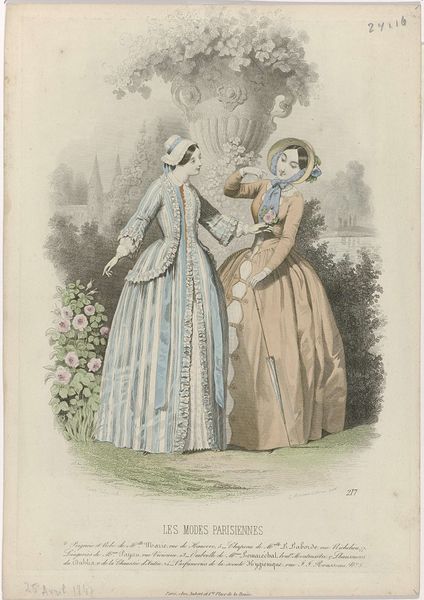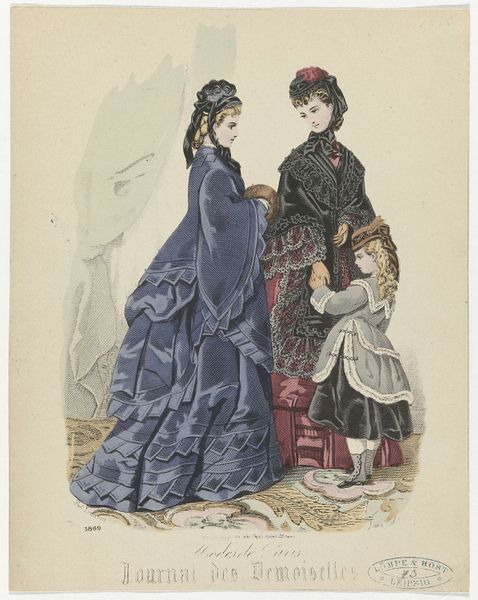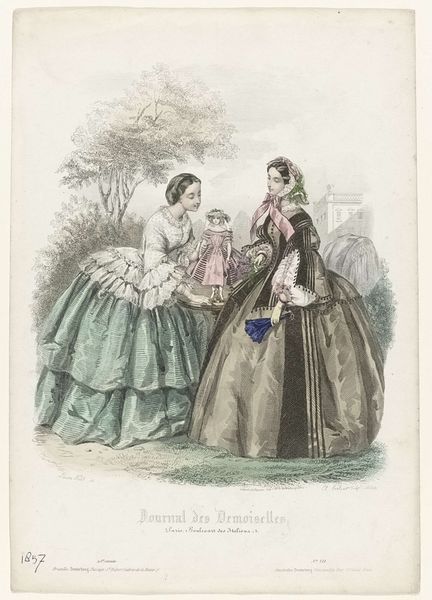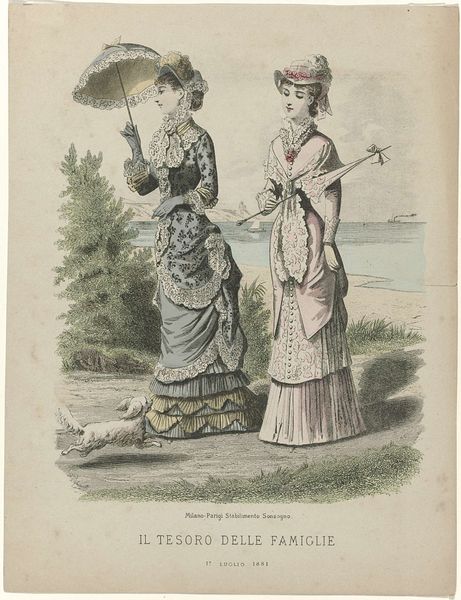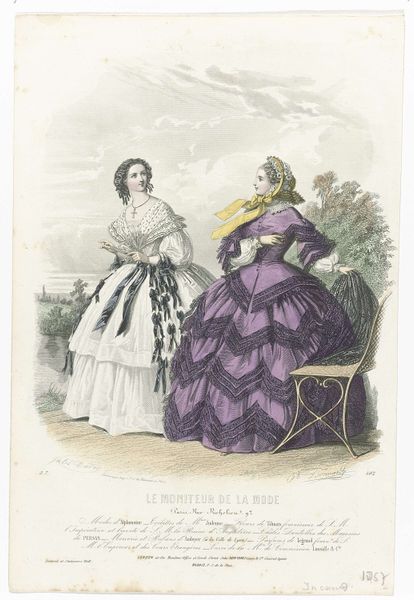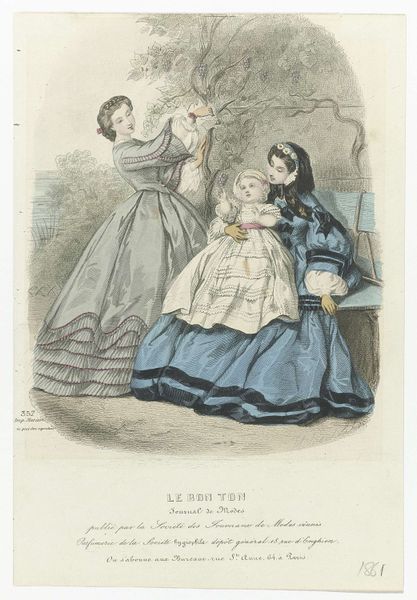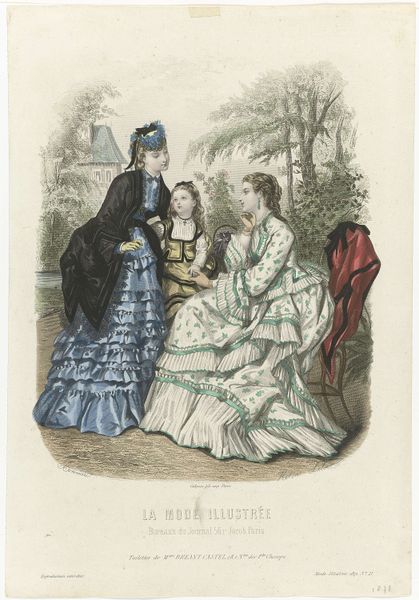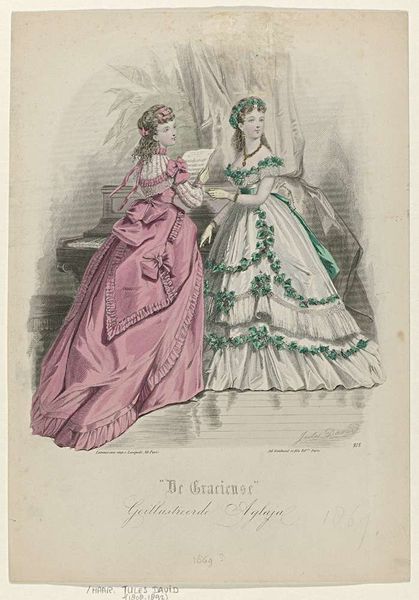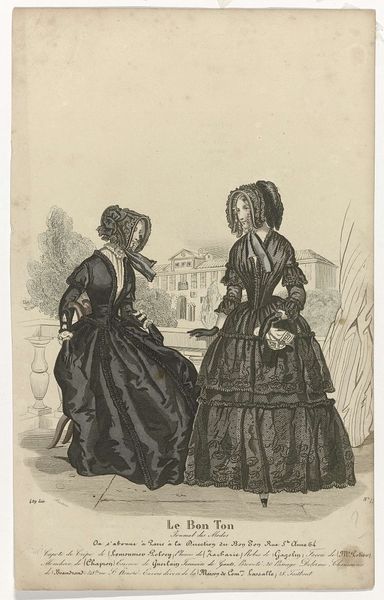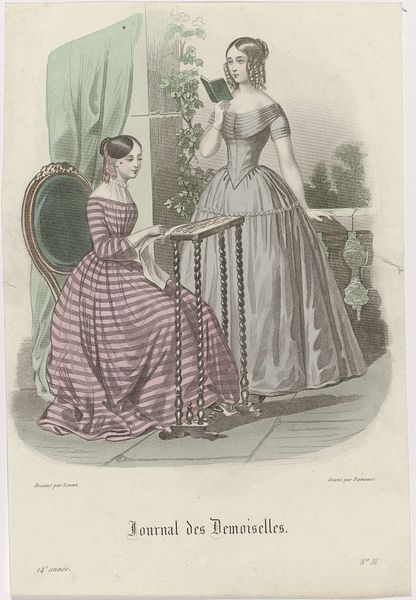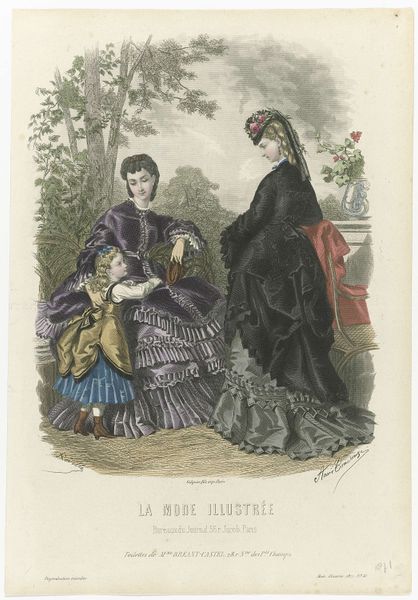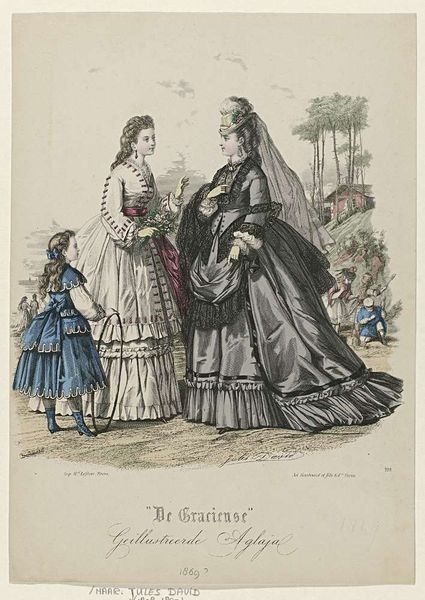
Dimensions: height 282 mm, width 202 mm
Copyright: Rijks Museum: Open Domain
This is a print made in 1871 by J. Bonnard, depicting two fashionable women at what appears to be a horse race. The woman in white, adorned with blue ribbons, represents a vision of youthful elegance, while her companion, cloaked in darker hues, hints at a more reserved, perhaps matronly, presence. Consider the ribbons: in earlier times, they were potent symbols of status and allegiance. Think of the Renaissance portraits where ribbons signified courtly connections and familial ties. Here, the ribbons evoke a sense of frivolity, a departure from their historical weight, yet they still whisper of social identity. These ribbons echo through time. We find them in medieval tapestries, symbols of courtly love, and in the baroque excesses of the French aristocracy. What does this tell us? That these motifs are not merely decorative, but act as a powerful force engaging viewers on a deep, subconscious level. They reflect the cyclical, non-linear progression of symbols, constantly resurfacing and taking on new meanings across time.
Comments
No comments
Be the first to comment and join the conversation on the ultimate creative platform.
